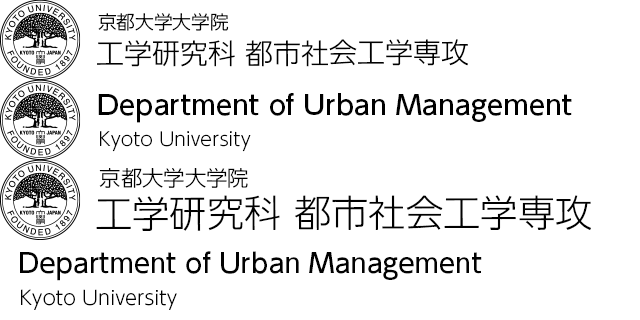Disaster Risk Management
Various human activities are involved in the process where external force from the nature brings about damage to the society. Its degree and recovery process are also differed by the interaction among the external force, human activities and infrastructure. Human activities specify distribution of population and property. At the same time, these activities make it possible to build soft and hard infrastructure by accumulating social capital, improving system for disaster prevention and growing disaster culture.
We focus on the relationship between infrastructure and these human activities which specifies " The Quality of Safety ". The goal of our research is to establish methodology of disaster risk management.
Academic Staff
Ana Maria CRUZ
Professor (Disaster Prevention Research Institute)
Research Topics
Contacts
Disaster Prevention Research Institute, Uji Campus
FAX: +81-774-38-8294
Yoko MATSUDA
Associate Professor (Disaster Prevention Research Institute)
Research Topics
Contacts
Disaster Prevention Research Institute, Uji Campus
TEL: +81-(0)-774-38-4279
FAX:+81-(0)-774-31-8294
Research Topics
Evaluation and Analyzing Methods of Disaster Risk
A disaster process which mean a natural hazard occurs then socio-economic losses are brought about involves complex processes in hierarchical structure in the social systems. These systems are characterized by distribution of human activities, degree of spatial accumulation of population and infrastructure, social and institutional environment such as laws, cultures and natural environment.
Figure 1 Risks on Human Activities
In order to analyze the relationship between distribution of human activities and disaster risk, the niche analysis is introduced. In terms of interactions between infrastructure and disaster risk, redundancy of highway network is focused and an performance evaluation method is proposed and investigated. For risk analysis of built environment and land use, we discuss potentiality of disaster risk information, and possibility of damage caused by disasters based on urban economics.
Social and Economical Impact of Disasters
Socio-economic impact by disasters grows continuously in recent years. Comparing the data of the 1990s to these of the 1960s, the total economic loss rises 8.6 times and the insurance payment rises 16.1 times although the number of disasters are increased by 3.2 times. These facts imply :
- frequency of disasters are increased worldwide and
- concentration of population and property in disaster-prone area exceed the increment of disasters.
Therefore, it is important to consider the effect on social and economic activities when disaster measure is examined.
We study potentiality of mitigation by providing a hazard map, and methods to evaluate short and long term effect by the investment for disaster prevention.
Figure 2 The Change of Economic Damage by Natural Disasters for the Past 50 Years.
( Sum total in the whole world for ten years each )
Strategy of Disaster Risk Management
Disaster risk management can be divided into “risk control” and “risk finance”.
Risk control includes not only physical risk control such as constructing dams or levees against floods, or reinforcing buildings or structures against earthquakes. Soft measures to control risk also exist such as insurance, tax or information supply system to deconcentrate property from disaster-prone area. However, it is impossible to avoid damage if a big disaster happens. To divide this disaster risk efficiently, risk finance is also essential. It is indispensable to combine these measures organically to make disaster risk management effective.
We study policy analysis in which how those measures should be combined to work out effective risk management strategies.
Figure 3 The Distribution of Damage by Disasters and Means of Risk Management
Social Consensus-building Process
In order to put management measure into practice, it is essential to build social consensus for them.
We assume this social consensus-building as a process that cooperative relationship is formed by individual players after they play a game aiming at maximizing their own profit.
We make game theoretical analysis on rules which make it possible to establish cooperative relationship spontaneously. Since informational asymmetry plays an important role during this process, we also examine negotiation results and players' preference structure under incomplete information.
